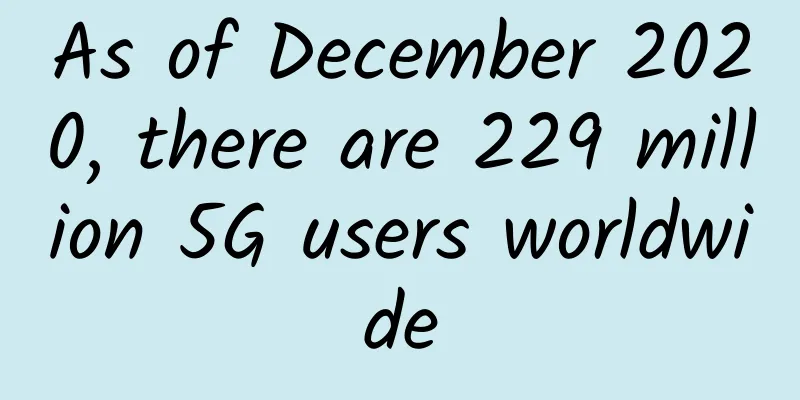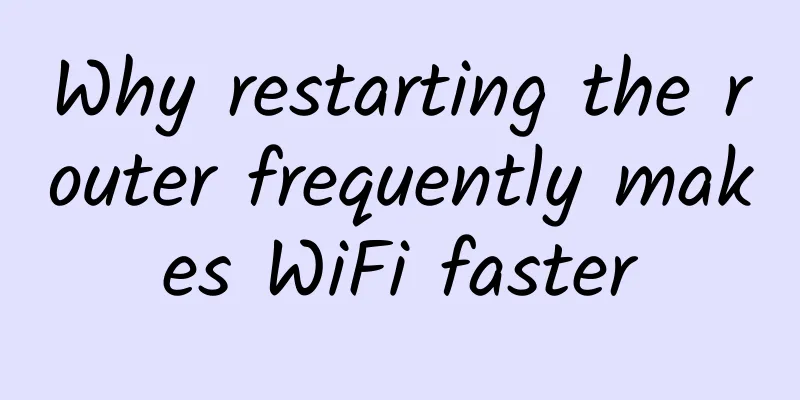5 predictions for 5G adoption in 2021 and beyond

|
If we roll up some of the predictions about the future of 5G into one prediction, by 2025, 5G technology will begin to deliver on some of the promises we heard five years ago. 5G technology is accelerating. If the latest predictions prove to be correct, the future of 5G is bright. Apple released the first iPhone with 5G connectivity in 2020, which can support both mmWave and sub-6GHz 5G technologies. AT&T and Verizon announced that their 5G services are available in various states in the United States, and Verizon also stated that its 5G Ultra Wideband service (up to 4Gbps) is available in 71 cities and regions in the United States. T-Mobile, which acquired Sprint in April 2020, added 2,000 towns to its 5G network with the launch of its standalone architecture. This brings the total number of cities it covers to more than 7,500.
But the more exciting developments and applications of 5G are yet to come, as 5G technology will become an integral part of the retail experience, fixed wireless access, manufacturing, healthcare, mobility, and throughout the Internet of Things (IoT). First, though, consider the scope of 5G technology growth. In a 2020 report on mobile communications, Ericsson predicted that by the end of 2025, the number of 5G users worldwide will reach 2.8 billion, accounting for about 30% of the total number of mobile communications users worldwide. (It should be noted that while Ericsson, as a communications technology provider, has a vested interest in painting a rosy picture of 5G's future, its oft-cited mobile communications industry report is highly respected.) The company noted in the report that the take-up rate of 5G subscriptions is expected to be much higher than that of 4G. In the second quarter of 2020 alone, 5G users with 5G-capable devices grew by about 50 million. According to IDC, a research firm, the number of 5G connections will increase from about 10 million in 2019 to 1.01 billion in 2023, with a compound annual growth rate (CAGR) of 217.2%. IDC also predicts that by 2023, 5G phones will account for 8.9% of mobile phone sales. According to the GSMA, the number of 5G mobile device connections will reach 1.8 billion by 2025, with the fastest growth in Asia and the United States. But all this growth will come at a huge cost. According to McKinsey & Company's forecast, by 2030, only a quarter of the world's population will have access to high-band 5G coverage, and 5G deployment will cost between $700 billion and $900 billion. This means that while 5G coverage will be greatly expanded, this expansion will only cover most marginal areas. In a February 2020 report titled "Connected World: The Evolution of Connectivity After the 5G Revolution," McKinsey & Company's Global Institute stated: "Given the scale of the investments required, communications providers will continue to face a difficult road ahead, with many of them committed to meeting shareholder demands while considering capital investments to enhance their networks." How the retail industry can benefit from 5GThe retail industry is expected to be one of the biggest beneficiaries of 5G technology by 2030. Especially in more populous areas where 5G coverage is expected to flourish, 5G is expected to complement smart retail technologies such as shelf sensors, cashier-less checkout and QR codes. Research firm IHS Markit explained how 5G will contribute to the global economy in a report released in November 2019. The report states that physical retailers can combine 5G, ultra-high-definition (UHD) video, virtual reality, augmented reality and digital signage as a way to compete more effectively with online shopping, which will come in the form of closer digital interactions with customers. Forrester Research said the benefits to the retail industry will come in building blocks, providing a frictionless end-to-end consumer experience in the form of enhanced mobile broadband, massive machine-type communications (MTC) and ultra-reliable, low-latency communications. Massive machine-type communications (MTC) provide connectivity to numerous devices that transmit small amounts of traffic intermittently. 5G mobile broadband will also facilitate virtual and remote support before, during and after sales, including VR and AR services, smart screens and mobile cloud services, Forrester said. Forrester pointed out that with the widespread use of IoT sensors, 5G communications will also improve the transparency and efficiency of the retail supply chain. According to data released by GSMA, by 2025, the number of IoT market connections in North America will reach 5.9 billion. The growth of the 5G market opens the door to new business opportunities. Demand for 5G in the manufacturing industry is growingMcKinsey & Company said the use of analytics, artificial intelligence and advanced robotics in smart factories can have a significant impact on the overall performance of a factory. The findings show that smart factories can improve operational efficiency at every stage of production - whether on an assembly line or across multiple production facilities. Analysts said industry players will increasingly use low-latency and private 5G networks to do this. When organizations in various industries consider adopting 5G technology, they can choose to build and control private 5G networks using their own spectrum, or obtain network slices from the public 5G wireless network of communication providers. Chris Antlitz, chief analyst at Technology Business Research, said that by 2030, more than 1,000 enterprises and government organizations will deploy private 5G networks. But he said that since it may take hundreds of millions of dollars to invest in automation transformation of manufacturing plants to adapt to 5G, only large enterprises will use private networks in the short term. According to McKinsey, manufacturing will add $400 billion to $650 billion to global GDP by 2030. 5G will revolutionize the healthcare industry5G will revolutionize every aspect of the healthcare industry, from supply chain optimization to remote diagnostics to electronic medical record management. PwC does not expect 5G technology to be widely deployed in the industry market before 2025, but points out that the pandemic may accelerate this process. When widespread deployment does occur, PwC expects to use 5G-compatible devices to monitor bed occupancy, the movement of doctors, nurses and patients around hospitals, and wearable medical devices. The biggest changes will come from tactile communications and the tactile internet. The International Telecommunication Union describes the tactile internet as an internet that combines ultra-low latency with extremely high availability, reliability and security. The tactile internet will enable doctors to perform surgery on remote patients. PwC describes it this way: "The surgeon's movements during surgery will be instantly reproduced by a computer device in another location. This innovation is particularly beneficial for treating patients in rural and remote areas where there may not be surgeons specializing in complex surgeries." According to McKinsey & Company, the 5G-enabled healthcare industry will add $250 billion to $420 billion to global GDP by 2030. Fixed wireless, sensors, and edge computing are all examples of applications for 5G technology. Fixed wireless access will gain tractionFixed wireless access (FWA) technology, once considered redundant to fibre by critics, uses 5G to deliver broadband internet to homes that don’t have access to or haven’t adopted wired service. The main advantage is that it can deliver similar average speeds to fibre-based services at about a quarter of the cost, according to the GSMA, the global communications industry body. “For customers, the advent of 5G means that previously unconnected homes and communities will realise the benefits of higher speeds, capacity and bandwidth to support the growing number of IoT devices coming to 5G,” the GSMA said in a November 2019 report. Fixed Wireless Access (FWA) has become one of the main use cases for 5G New Radio (5G NR). 5GNR is a standard that replaces the 4G wireless communication standard of LTE networks. 5GNR supports fiber-equivalent bandwidth transmission, which is suitable for applications such as streaming video and low-bandwidth transmission in massive (M2M) communications. 5GNR also handles vehicle-to-vehicle (V2V) and vehicle-to-infrastructure (V2I) transmissions with extremely low latency requirements. Fixed wireless access (FWA) users will need new customer premise equipment (CPE). According to Counterpoint Research, by 2030, 5G CPE shipments for fixed wireless access (FWA) will exceed 1 billion units, with a compound annual growth rate of 47% over the next 10 years. 5G Development after 2021The application of 5G technology will become more and more extensive in the future. However, what is really exciting is the benefits that 5G brings to smart mobility systems - car-sharing services, public transportation, vehicle-to-vehicle (V2V) and vehicle-to-infrastructure (V2I) and shipping and receiving, which can use 5G to improve operational efficiency, share information with the public, and improve the quality of government services and citizen welfare. Given the possible uses and benefits of 5G, McKinsey & Company estimates that 5G technology could add $170 billion to $280 billion to global GDP by 2030. |
<<: AT&T is offering six months of Stadia Pro for free to 5G and fiber customers
>>: The global 6G competition has quietly begun
Recommend
Under the dual system of security and safety protection, Ruishu Dynamic Security Hyper-convergence helps enterprises implement "three transformations and six defenses"
In order to further strengthen the security of my...
Kaspersky Managed Detection and Response Service receives top rating in Garter Peer Insights
Kaspersky’s Kaspersky Managed Detection and Respo...
5G technology will unleash the huge potential of smart cities and the Internet of Things
Imagine a city where self-driving vehicles commun...
Japanese media disclosed: The United States will set up a 5G multilateral fund to contain China
According to a report by Japan's Yomiuri Shim...
The router antenna is built-in or external, so there is no need to worry.
WiFi 6 wireless routers are being upgraded and re...
Shen Bin from CAICT: 5G factories promote high-quality development of "5G+Industrial Internet"
In August 2022, the Ministry of Industry and Info...
Do you turn off your wireless router when you go to bed at night? Don't worry about radiation
A strange theory about wireless routers has appea...
Do you know how to debug Modbus protocol?
[[386743]] The Modbus protocol adopts master-slav...
Effective Risk Management in Data Centers
Today, data center managers are constantly battli...
LuxVPS: €3/month KVM-4GB/30GB/1TB/Germany data center
The LuxVPS domain name was registered in June 202...
The three major operators work together to embrace 5G positioning, accelerate capacity improvement, and jointly create an industrial ecosystem
Telecom operators are not only the builders and o...
Why the popular dual-band wireless router advantages tell you
Open the e-commerce website, dual-band wireless r...
Building a native cloud to truly realize the benefits of NFV
The goal of network function virtualization in th...
Don't know how to learn the protocol? Click it!
Once you enter the communications industry, you w...
Who will shoulder the responsibility of making money from 5G? Although first class is expensive, total revenue still depends on economy class
5G brings a large number of new products and serv...









